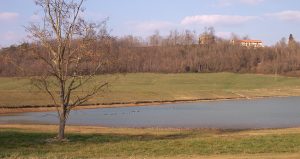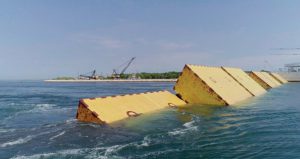Floodings in France cause severe damage

-
 Fergal MacErlean
Fergal MacErlean
Share article:
France is battling floods again. Several parts of western France were flooded as the river Charente burst its banks on Sunday December 17 after days of steady rainfall. More than 200 people were evacuated from their homes. This is the second major flooding event to happen to the area this month after rivers in the Dordogne and neighbouring departments burst their banks earlier in December.
And in November an official state of emergency was declared in hundreds of towns and villages in northern and eastern France after record rainfall led to widespread flooding. At least three people were killed. A € 50 million emergency fund was created to help local authorities deal with the crisis. A further € 80 million was being used to help farmers in the worst affected areas, the agriculture minister, Marc Fesneau, announced.
High floodrisks in France
France is particularly exposed to flooding, the country’s Ministry of Ecological Transition states, due to overflow of water courses; runoff; marine submergence; and the rise of the water table, among other factors. More than 17 million inhabitants are exposed to the different consequences of flooding by overflowing rivers, including 16.8 million in metropolitan France; and a further 1.4 million people are exposed to the risk of marine submersion.
Flood risk prevention programme
A national risk management strategy for floods (SNGRI) was published by the state in 2014. Adapted prevention tools have gradually been developed and mobilized by France to reduce the vulnerability of territories and preserve lives. Among these tools is the Flood Prevention Action Programme (PAPI) to promote a global management of the risks of flooding at the risk basin scale. These programmes are carried out by local and regional authorities or their groups and constitute the framework for a close partnership with the government in the field of flood prevention.
Shift to basin approach
The latest PAPI (PAPI 3 2023) brings several simplifications to the labelling procedure. In order to take decisions as close as possible to the territories, the PAPIs are now all labeled on the scale of the hydrographic basin by the prefect coordinator of the basin after the prior opinion of a basin body in order to make decisions as close as possible to the affected territories.
State investments
Financial support for communities has been reinforced. Actions under management are now eligible for an additional 50% of financial assistance from the state. At the end of June 2023, 243 projects received € 2.9 billion which including € 1.2 billion of financial aid from the state. PAPI monitoring is carried out via a monitoring tool managed by the Ministry of Ecological Transition.
EU flood risk map
More than 14,000 areas in the EU are at significant risk of flooding, according to an online viewer launched in October. The viewer presents for the first time in one map the areas in the European Union which, according to the national authorities, carry a potentially significant flood risk. The flood risk information presented in the viewer is provided by EU Member States with support from the Commission and the European Environment Agency. It reflects work carried out by the Member States under the Floods Directive.
Water conflicts in France
France is not only suffering from flooding, but is also facing water scarcity and droughts in summer. It also leads to conflicts about the division of fresh water between citizens and farmers. In France there are more and more protests against mega-reservoirs to reserve water for farmers.
















